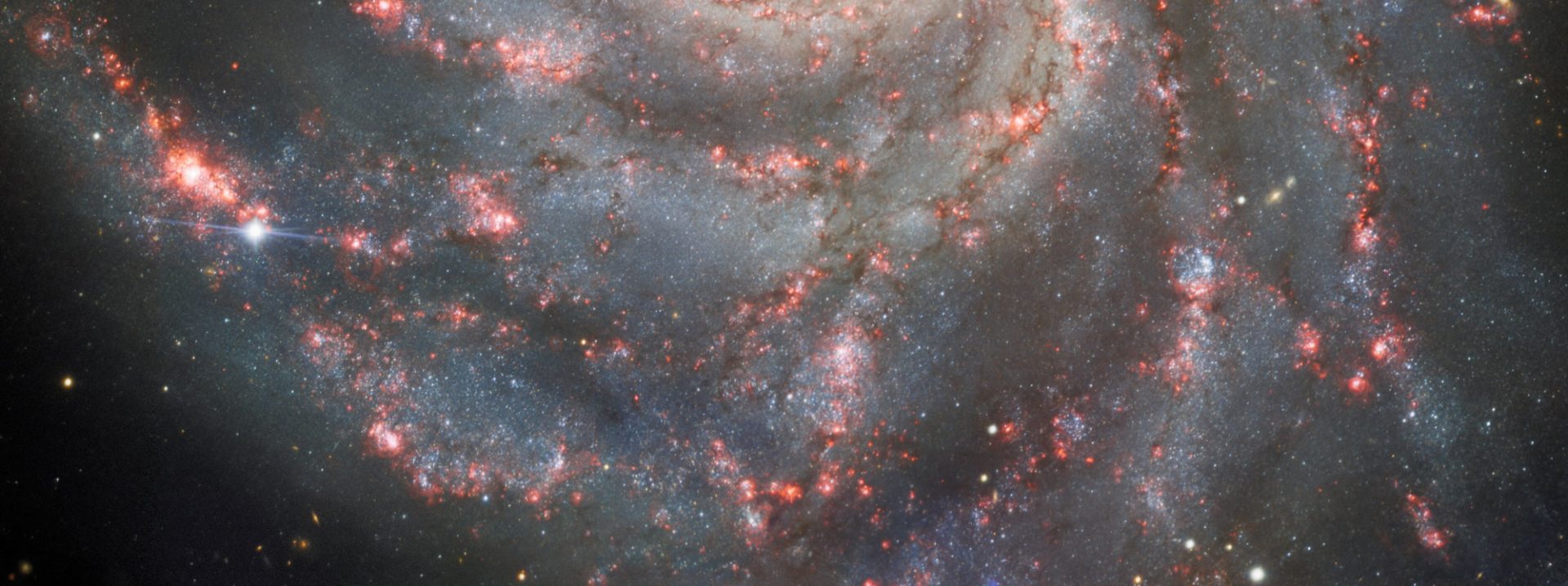5月14日早上,金彰伟在查看稍早拍摄的星系图片时,发现NGC 5425星系可能有超新星爆发,再查询近期的超新星上报图片没有发现已知的,随后先报告高兴老师,并开始撰写上报文本,最后由高兴上报。上报后在TOCP发现该目标已经由Tim Puckett’s Supernova Search Program上报,Tim Puckett在5月12日拍得图片,推后一晚上报的,是为了拍得二晚图片确认发现(向他们学习)。这样,我们也算验证了他的发现。(二个星表测得亮度怎么就差1等呢?)
Zhangwei Jin(Ningbo, Zhejiang, China) and Xing Gao (Urumqi, Xinjiang, China), report the discovery of a possible supernova (mag approximately 16.6) on a 60-s survey image (limiting mag about 19.5)taken by Xing Gao in Xingming ObservationSky Survey(C42) around May. 13.84400 UT,2011. using a unfilled CCD ( + Celestron C14 Schmidt-Cassegrain telescope D=350-mm @f/6.9 ).the new object approximately located at R.A. =14h 00m 46s.32 Decl.=+48°26’46”.4 (equinox 2000.0). Which is about 15.6″ west and 8.4″ north of the center of the NGC 5425.
Nothing is visible at this position on archival images taken on Apr. 24 (limiting mag 19.0) , Apr. 27 (limiting mag 17.5) and May. 27 (limiting mag 17.5) or on the DSS(POSS2/UKSTU Red) from Mar 26,1989(limiting mag about 19.5).
NET USNO-A2.0
XM21ZJ C2011 05 13.84400 14 00 46.32 +48 26 46.4 16.6 R C42
NET UCAC-3
XM21ZJ C2011 05 13.84400 14 00 46.30 +48 26 46.0 17.6 V C42
All images can be seen from: http://www.xjltp.com/XOSS/XM21ZJ/XM21ZJ.htm
C42 Xingming Observatory, Mt. Nanshan. Observers Z.Jin, X.Gao ,Measurers Z.Jin 0.35-m f/6.9 Schmidt-Cassegrain telescope and CCD.
Electronic Telegram No. 2722
Central Bureau for Astronomical Telegrams
INTERNATIONAL ASTRONOMICAL UNION
CBAT Director: Daniel W. E. Green; Hoffman Lab 209; Harvard University;
20 Oxford St.; Cambridge, MA 02138; U.S.A.
e-mail: cbatiau@eps.harvard.edu (alternate cbat@iau.org)
URL http://www.cbat.eps.harvard.edu/index.html
Prepared using the Tamkin Foundation Computer Network
SUPERNOVA 2011ck IN NGC 5425 = PSN J14004624+4826454
J. Newton and T. Puckett report the discovery of an apparent supernova
(mag 15.9) on an unfiltered CCD image (limiting mag 18.9) taken with a 0.35-m
reflector at Portal, AZ, U.S.A., on May 12.291 UT in the course of the Puckett
Observatory Supernova Search. The new object (which was designated PSN
J14004624+4826454 when posted on the Central Bureau’s TOCP webpage and is here
designated SN 2011ck based on the spectroscopic report below) is located at
R.A. = 14h00m46.24, Decl. = +48o26’45”.4 (equinox 2000.0), which is 14″.8 west
and 7″.3 north of the center of NGC 5425. Additional approximate unfiltered
CCD magnitudes for 2011ck: 1989 Mar. 26, [19.5 (red Digitized Sky Survey
image; via Zhangwei Jin, Ningbo, Zhejiang, China; and Xing Gao, Urumqi,
Xinjiang, China); 2010 Mar. 11, [19.1 (Puckett); 2011 Apr. 24, [19.0 (Jin and
Gao; 0.35-m reflector at Mt. Nanshan); Apr. 27, [17.5 (Jin and Gao); May
13.294, 15.9 (Puckett); 13.844, 16.6 (Jin and Gao; limiting mag about 19.5;
independent discovery; reported after Puckett’s TOCP posting; position end
figures 46s.32, 46″.4; offset 16″ west, 8″ north from the center of NGC 5425);
14.354, 17.2 (Joseph Brimacombe, Cairns, Australia; remotely using a 51-cm
RCOS telescope + STL11K camera at New Mexico Skies Observatory, Mayhill, NM,
U.S.A.; position end figures 46s.30, 45″.6). Jin and Gao have posted an
image of 2011ck at website URL http://www.xjltp.com/XOSS/XM21ZJ/XM21ZJ.htm.
Brimacombe has posted his image at the following website URL:
http://www.flickr.com/photos/43846774@N02/5721977398/.
G. H. Marion, Harvard-Smithsonian Center for Astrophysics (CfA) and
University of Texas; J. Vinko, University of Szeged; and J. C. Wheeler,
University of Texas, report that a spectrum (range 430-1000 nm) of PSN
J14004624+4826454 = SN 2011ck was obtained by S. Odewahn on May 17 UT with
the 9.2-m Hobby-Eberly Telescope (+ Marcario Low-Resolution Spectrograph).
Cross-correlation with a library of supernova spectra using the “Supernova
Identification” code (SNID; Blondin and Tonry 2007, Ap.J. 666, 1024) shows
that the object is a type-IIP supernova at two to three weeks after the
explosion. The redshift is estimated to be z = 0.0065, measured from host-
galaxy emission lines. The centroid of the emission component of the H-alpha
feature is blueshifted by about 4000 km/s, and it is much stronger than the
absorption component. The velocity of the H-alpha feature, measured at the
absorption minimum, is estimated to be approximately 16000 km/s.
